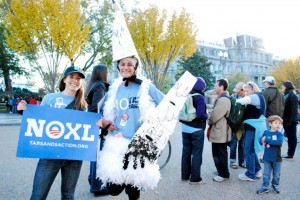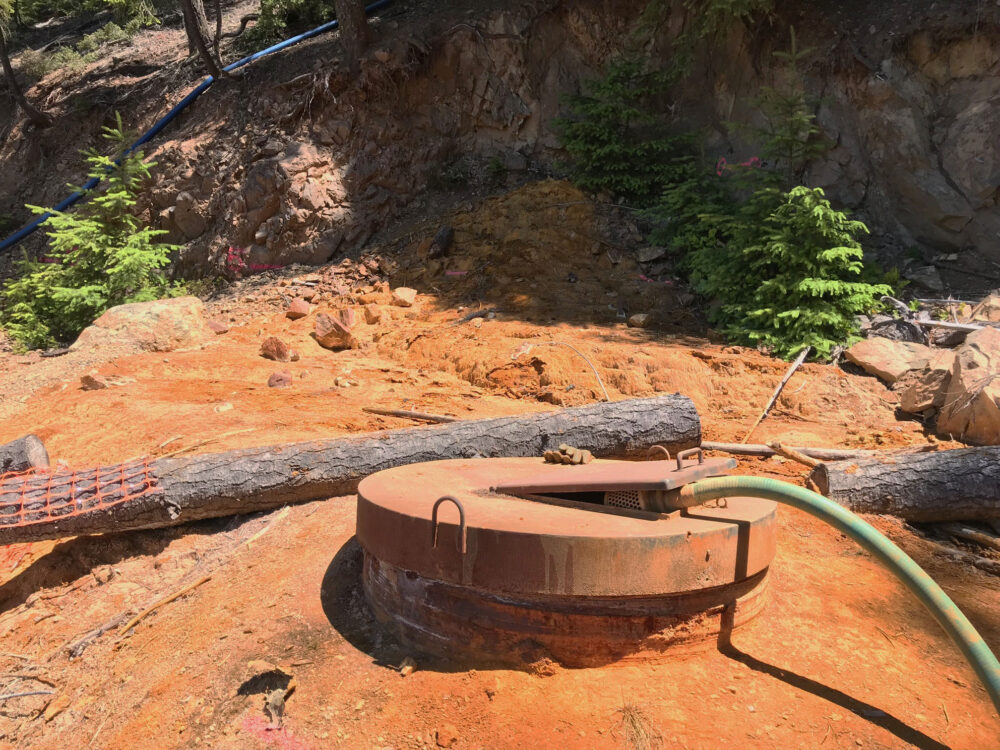We have much more to do and your continued support is needed now more than ever.
Thousands of People (plus one Whooping Crane) Protest Keystone XL

I gathered with thousands of others around Barack Obama’s house on Sunday, urging the President to say no to the proposed Keystone XL Pipeline that would carry millions of barrels of tar sands oil through America’s heartland, including the sensitive sandhill region in Nebraska. President Obama will be deciding whether or not to approve the dirty energy project in the coming months.
Tar sands oil is one of the dirtiest and most energy-intensive forms of oil to produce. Oil companies are digging up pristine habitat in Alberta, Canada that provides habitat for lynx, moose, grizzly bears, and migrating birds. Wildlife advocates joined with ranchers, faith leaders, sportsmen, environmentalists, tribal leaders, and many other Americans across the country to completely encircle the White House, sending a powerful statement to Mr. Obama: We will not back down.

Bill McKibben with 350.org and Tar Sands Action who coordinated the day, recalled the President’s promises to end the tyranny of oil and commit to curbing climate change.
Looking out over a sea of activists wearing orange “Stop the Pipeline” safety vests and waving “No Oil in Our Soil” cornfingers in the air, NWF President and CEO Larry Schweiger spoke to the crowd as well, calling on the President to make the right decision for future generations and the well-being of our planet.
Want to see more? Check out Tar Sands Action’s amazing photos capturing the event!
The Story Behind the Whooping Crane
It’s a chicken! It’s a swan! It’s an ostrich! Actually….it’s a whooping crane. Aside from a couple polar bears, the endangered whooping crane was the only impacted animal seen at the White House. The whooping crane has a lot at stake in whether the Keystone XL pipeline is approved. Although I’m sure the chickens, swans, and ostriches (nice guesses!) of the world don’t like the pipeline either.

The whooping crane (also known as NWF staff member, Sabrina Patel) donned white feathers speckled with oil and a characteristic red featherless patch near its beak. Whooping cranes are one of the most highly endangered birds on the planet–only 74 breeding pairs exist in the core population found near the tar sands in Canada’s boreal forest.
Keystone XL would follow the bird’s migratory route and cross the Platte River in Nebraska where whooping cranes stop to rest and eat on their journey to Canada. An oil spill in the Keystone XL pipeline (experts have predicted that 91 spills will occur in KXL’s lifetime) would harm the whooping crane’s migratory route and put the already endangered bird in even greater risk.
 Speak up to keep oil out of whooping crane habitat.
Speak up to keep oil out of whooping crane habitat.





















